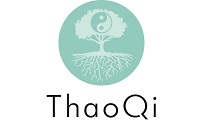Introduction: Understanding the Body’s Response to Stress
Stress is an inherent part of life, affecting both our physical and mental well-being. When we encounter stressors, whether they are external challenges or internal conflicts, our body responds in a variety of ways. Understanding this stress response is crucial for managing its impact on our overall health, particularly in relation to chronic pain.
Understanding the Relationship Between Stress and Pain (Chronic or non Chronic)
The relationship between stress and pain that sometimes become chronic is complex and multifaceted. Stress has been shown to exacerbate pain symptoms, leading to increased discomfort and reduced quality of life. Moreover, the experience of pain itself can be a significant source of stress, creating a vicious cycle that is challenging to break. When we go through stress, trauma, or something unpleasant, even if it’s just a small little incident or an argument with a loved one, the stress response that lies in our nervous system is contraction. Our body responds by tightening the gut, shoulders, or lower back, holding it all in tightly as a modern response to protect ourselves. All of the things we have been holding in turn into chronic tension and contraction, and we start thinking of it as normal, we actually get used to the pain. By addressing both the physical and psychological aspects of pain, we can effectively manage the symptoms and improve our well-being.
Exploring Different Forms of Stress
Stress can manifest in various forms, including negative, positive, and neutral experiences. Negative stressors, such as work-related pressure or interpersonal conflicts, can contribute to the development and exacerbation of chronic pain. Conversely, positive stressors, such as a new job or a joyful event, may also impact pain perception in unexpected ways. Understanding how different types of stress influence chronic pain can provide valuable insights into personalised pain management strategies.
The Vicious Cycle of Stress and Pain
The interplay between stress and chronic pain creates a challenging cycle that many individuals find themselves trapped in. Chronic pain can lead to increased stress levels, which in turn exacerbate pain symptoms, leading to further stress. Breaking this cycle requires a holistic approach that addresses both the physical and emotional aspects of pain. By implementing effective stress management techniques, individuals can interrupt this cycle and regain control over their health and well-being.
Ancient Wisdom in Modern Context: Integrating Ayurveda, Chinese Medicine, and Qigong
Ancient healing traditions such as Ayurveda, Chinese medicine, and Qigong offer valuable insights into stress management and pain relief. These holistic approaches emphasise the interconnectedness of the mind, body, and spirit, providing a comprehensive framework for addressing chronic pain and stress.
-
Ayurvedic Techniques for Tension Release
Ayurveda offers a range of techniques for releasing tension and promoting relaxation. Abhyanga, or self-massage, is one such practice that involves massaging the body with warm oil to soothe tired muscles and calm the mind. Pranayama, or breathwork, is another powerful tool for stress relief, helping individuals regulate their breath and cultivate a sense of inner peace.
Yoga offers a variety of asanas, or postures, that can help alleviate physical and emotional tension. Poses such as child’s pose, forward fold, and corpse pose are particularly effective for promoting relaxation and reducing stress.
-
Chinese Medicine Approaches to Stress Management
Chinese medicine offers a wealth of effective approaches to stress management, including acupuncture and acupressure. These therapies work by stimulating specific points on the body to promote energy flow and balance. By addressing blockages and imbalances in the body’s energy system, acupuncture and acupressure can help alleviate physical and emotional tension, leading to improved pain management and overall well-being.
-
Qigong Practice for Stress Relief
Qigong, an ancient Chinese practice, combines gentle movement, breathwork, and meditation to promote healing and relaxation. Through slow, deliberate movements and focused breathing, Qigong helps individuals release tension stored in the body and calm the mind. Incorporating Qigong into a daily routine can provide profound benefits for stress management and pain relief. “Mabu Standing” and “Dragon Stands Between Heaven and Earth” can help individuals release tension and cultivate a sense of balance and harmony.
Empowering Self-Care Practices: Strategies for Releasing Tensions
In addition to ancient healing techniques, there are many self-care practices that individuals can incorporate into their daily routine to release tension and promote relaxation.
-
Cold or ice bath, altering with hot bath or sauna or steam room
The contrast bath technique involves alternating between cold or ice baths and hot baths, saunas, or steam rooms. This method is commonly used to promote circulation, reduce inflammation, and enhance recovery after physical activity. Alternating between hot and cold temperatures can help improve blood flow, reduce muscle soreness, and support overall relaxation and well-being.
-
Body Scan Meditation
Body scan meditation is a powerful mindfulness practice that involves systematically scanning the body for areas of tension and consciously releasing them. By bringing awareness to areas of discomfort and tension, individuals can learn to relax more deeply and cultivate a greater sense of ease and well-being.
-
Mindfulness and Breath Awareness
Mindfulness practices, such as mindful breathing and body scanning, can help individuals cultivate a greater sense of presence and awareness in the present moment. By focusing on the breath and observing sensations in the body, individuals can learn to manage stress more effectively and cultivate a greater sense of calm and equanimity.
-
Cultivating Rituals of Healing: Nurturing the Body and Mind
Creating personalised self-care rituals can be a powerful way to nurture the body and mind and promote overall well-being. Whether it’s taking a warm bath, walking in nature, walking barefoot, incorporating daily rituals into our lives can help us feel more grounded, centred, and resilient in the face of stress and pain.
Conclusion: Embracing Ancient Wisdom for Modern Wellness
In conclusion, the ancient wisdom of Ayurveda, Chinese medicine, and Qigong offers valuable insights into stress management and pain relief. By integrating these holistic approaches into our modern lives, we can tap into the power of tradition to support our physical, emotional, and spiritual well-being. As a holistic practitioner, and healing coach, I specialise in guiding individuals on their journey to wellness, offering personalised support and guidance to help them unlock the art of stress response and create a life of greater balance, resilience, and vitality. If you’re ready to take the next step towards holistic healing, I invite you to reach out and explore how we can work together to achieve your health and wellness goals.

